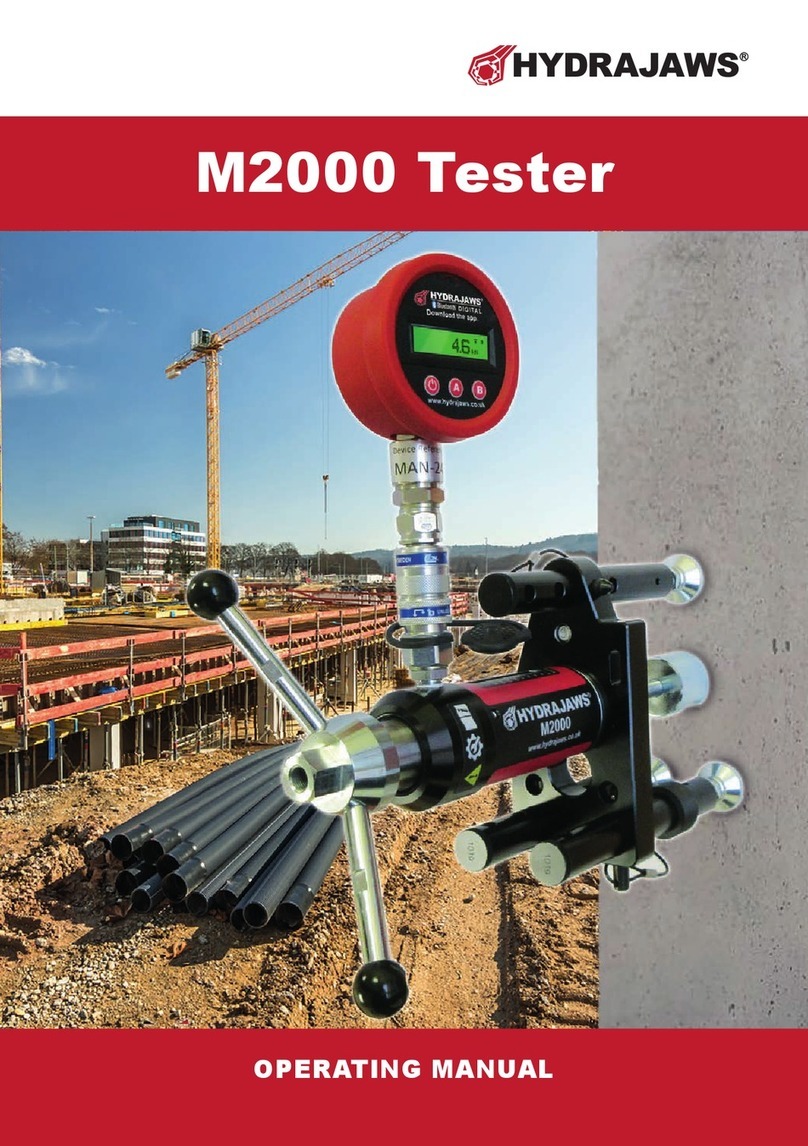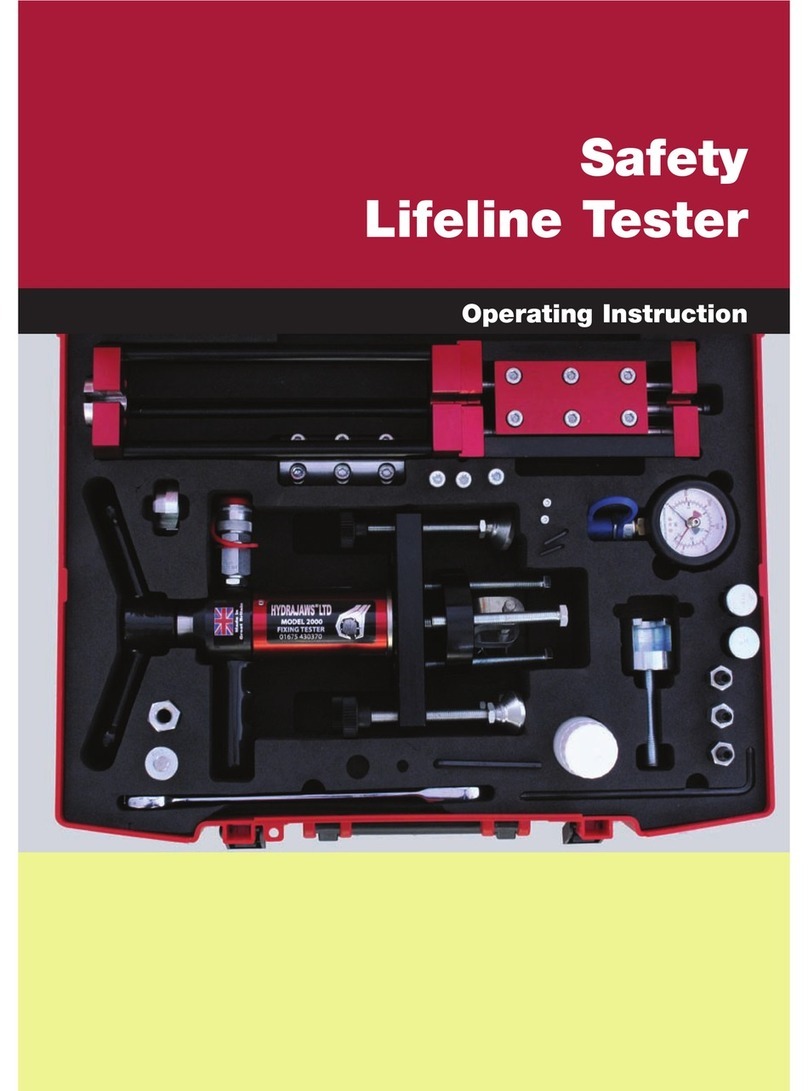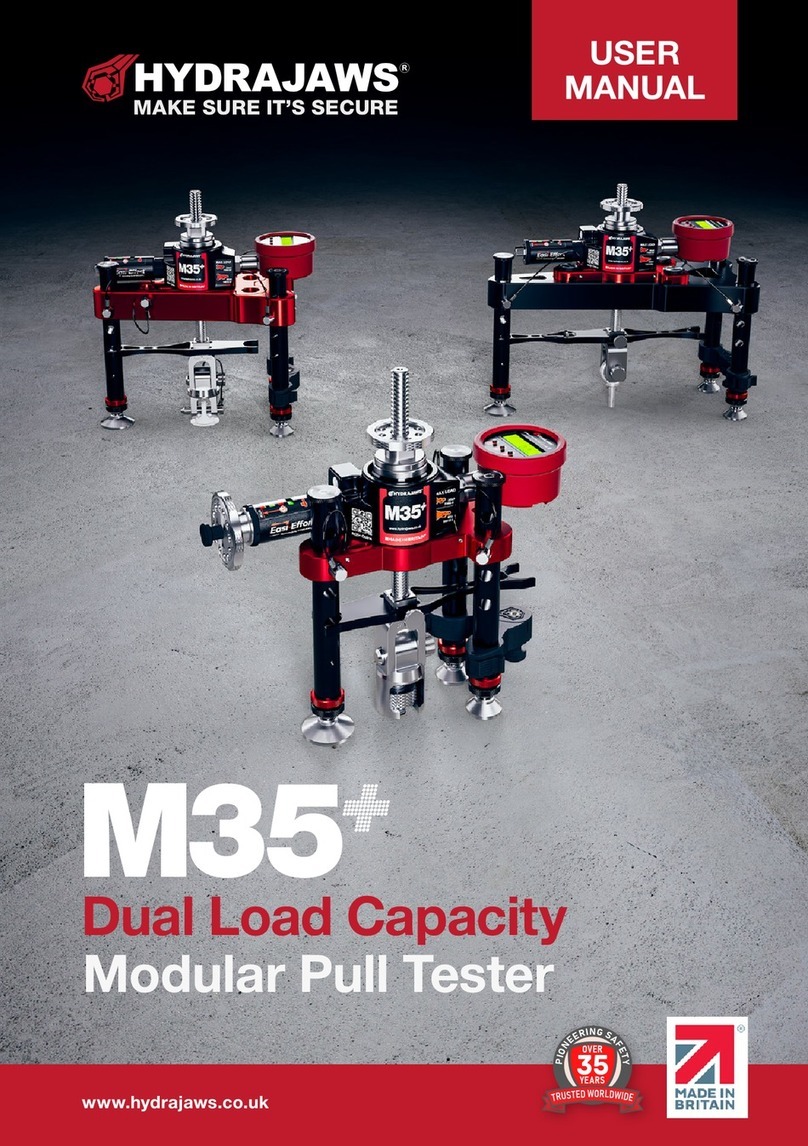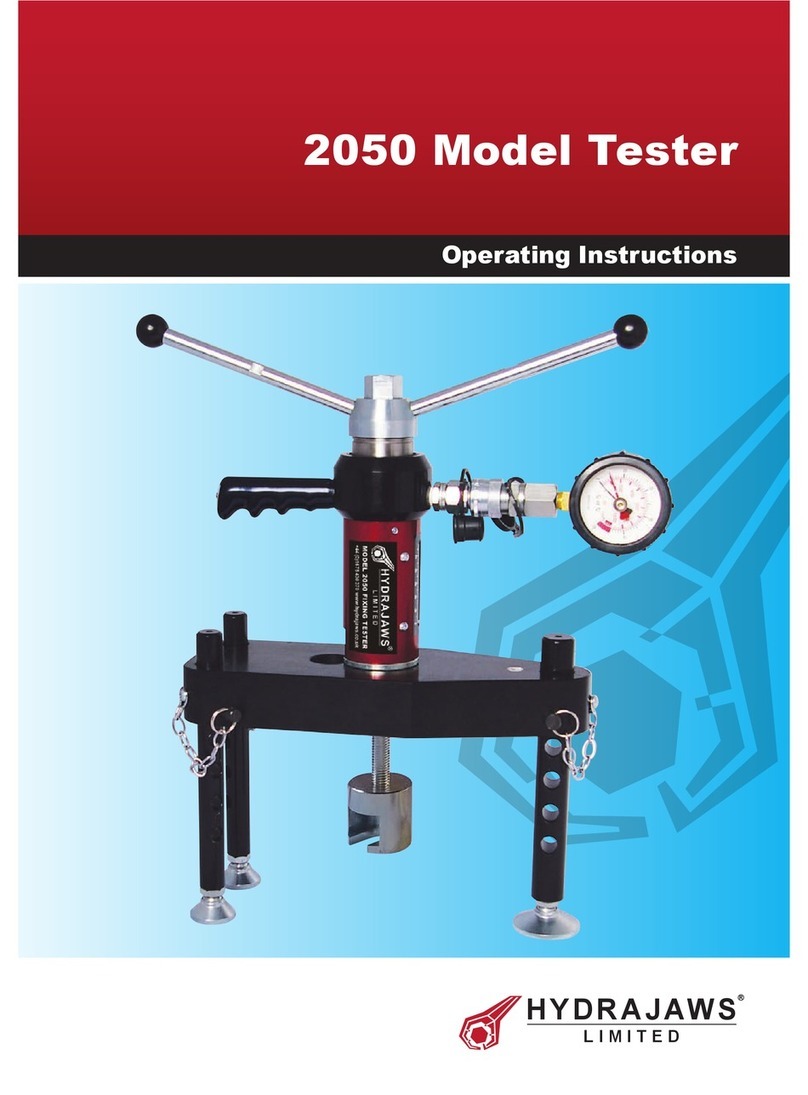76
Assemble the load spreading bridge.
Secure the tester to the bridge if
appropriate.
Position the tester and bridge over
the xing and using the M20 connecting
rod pass this through the tester and
bridge (g 5).
Switch the digital gauge on (see separate
gauge operating instructions in this
manual).
Commence applying the load to the xing
by turning the hexagon nut on the end
of the operating piston in a clockwise
direction by hand until tight or reading
appears on gauge.
Apply load using the ratchet spanner (g
10) and observe the reading on the gauge
until the required test load is reached. This
reading could decay due to rst movement
or creep on the anchor. Continue to apply
the load to the required reading and
observe that the loading remains steady.
Should a serious drop in the indicated
load occur again, the xing is likely to be
insecure and should be investigated.
As the digital gauge is very accurate a
drop off will be noticeable but this should
stabilise after a period of time. If the
reading continues to drop off, further
investigation of the xing would be
required.
To release the load, reverse the ratchet
ring spanner and turn the hexagon nut
anticlockwise and observe the load
reading on the gauge until it approaches
zero. Unwind the operating nut by hand
until it is resting on the stop and unwind
the adjustable nut and remove.
DO NOT CONTINUE TO UNWIND
AGAINST THE STOP, OTHERWISE
SERIOUS DAMAGE WILL OCCUR.
Fig 5
Fig 6
2. General Testing Procedure - set up 3. General Testing Procedure - Operating the tester
M20
connecting
rod
Threaded
adaptor
WARNING
DO NOT unwind the
piston past the stop!
If after a test, the operating nut has
been unwound fully however the top
piston remains tight, untighten the
adjustable nut with the ratchet spanner.
Connect the M20 connecting rod to xing
using the appropriate threaded adaptor
(g 6).
The standard tester kit features ve metric
threaded adaptors:
M20>M12, M20>M16, M20>M20,
M20>M24 or M20>M30.
Note: Other metric thread sizes are
available via special order.
Imperial UNC adaptors are available
from stock.
Sizes; 3/8”, ½”, 5/8”, 3/4”& 1”
Install M20 adjusting nut (g 7) on top of
the threaded pull rod.
Adjust the 3 telescopic legs to an
appropriate height, take up any initial
slack using the threaded pull rod so
that the xing under test remains
connected with no movement between
the connecting rod nut and the top of the
tester.
Ensure the tester is level by adjusting the
swivel feet against the level bubble on the
top of the tester body (g 8).
Each threaded swivel foot features 30mm
of ne adjustment.
Tighten with ratchet spanner (g 9).
Fig 8
Fig 10
Fig 7
Fig 9
































